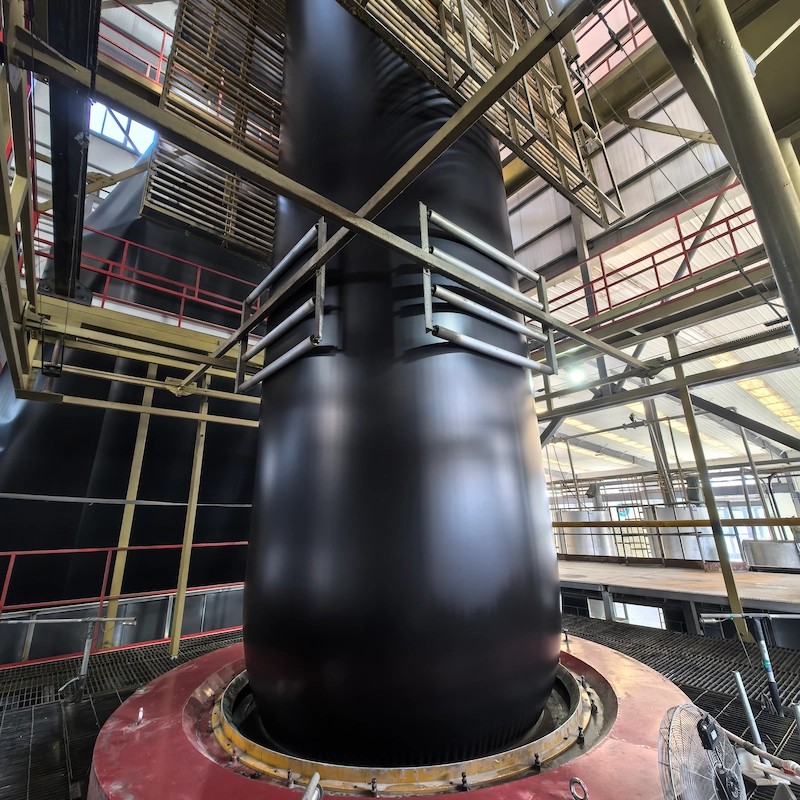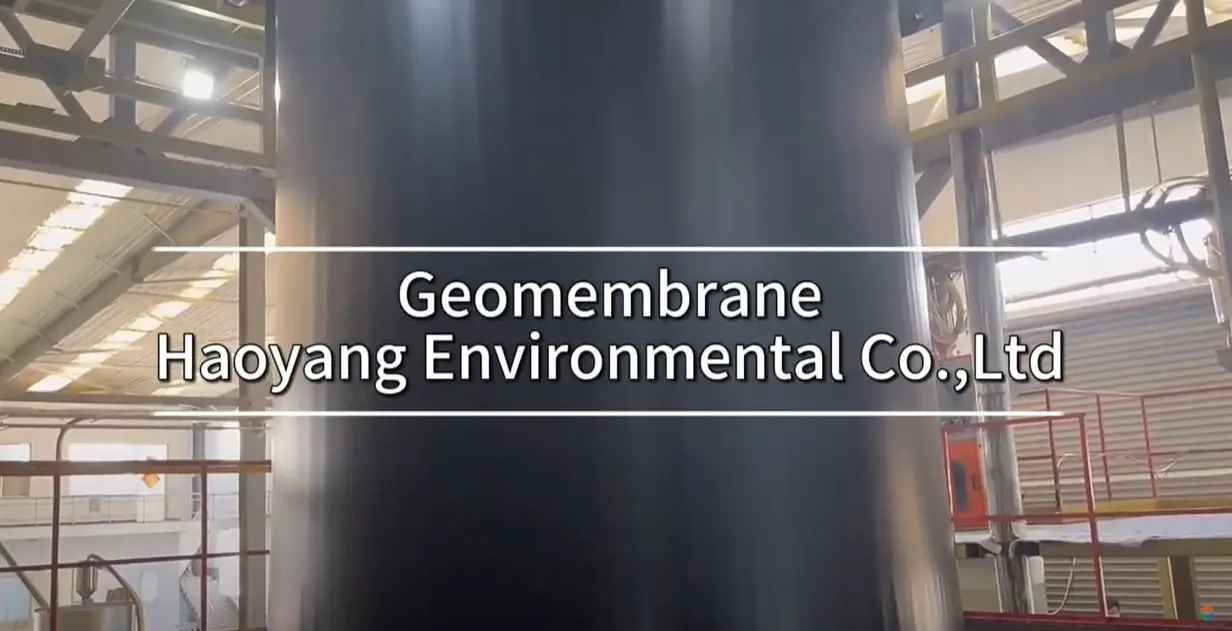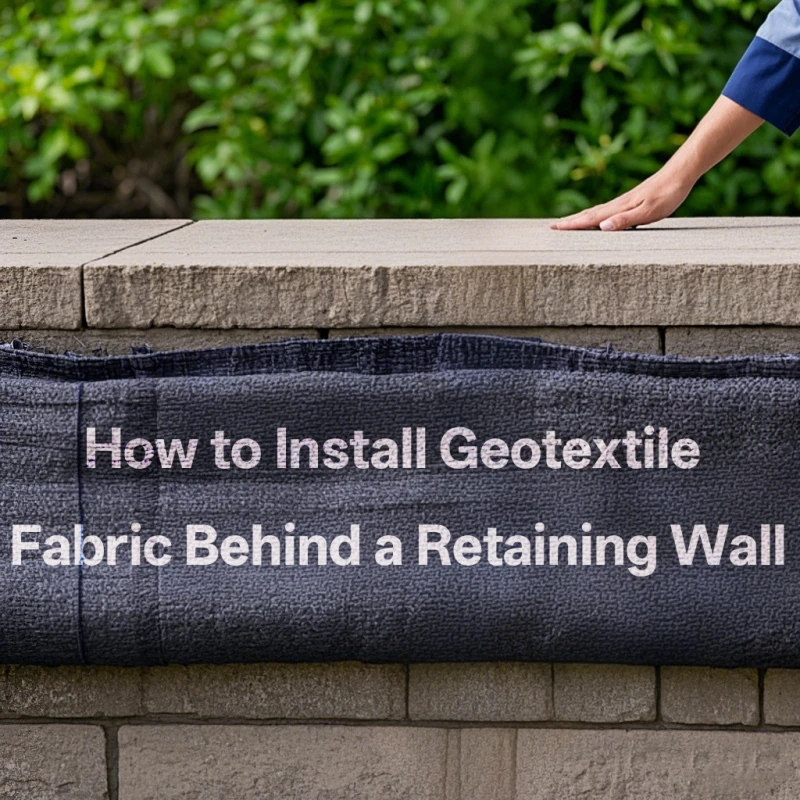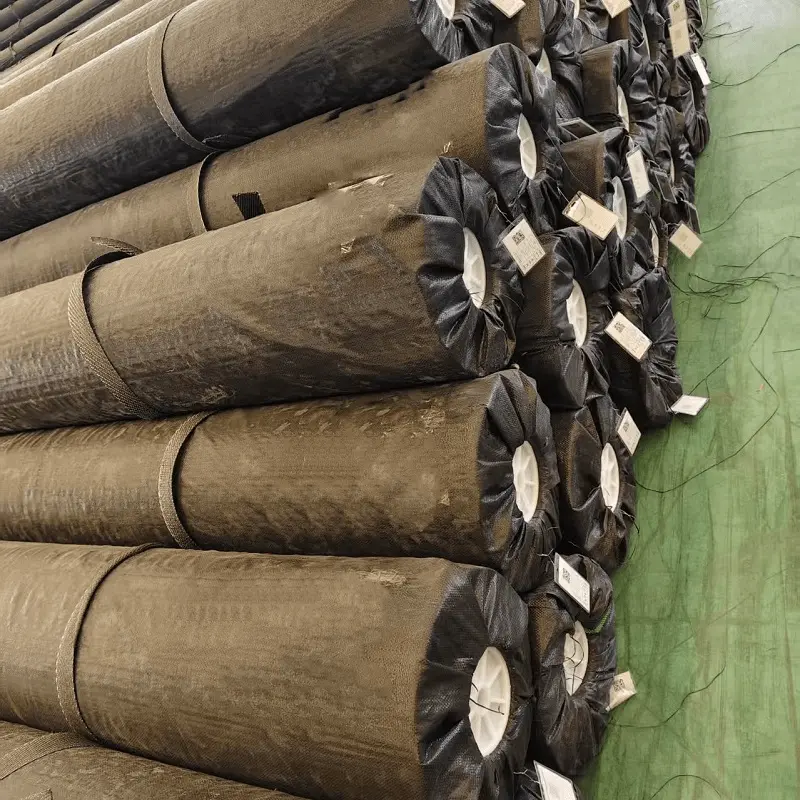Edited by Lucia-Haoyang Environmental
I. Introduction to HDPE Geomembrane for Dam Liners
1. What is an HDPE Geomembrane?
HDPE geomembranes are synthetic materials made from high-density polyethylene resin. They are engineered to provide exceptional resistance to chemicals, UV radiation, and mechanical stress, making them ideal for applications in dam linings, landfills, and other containment projects.
2. Importance of HDPE Geomembranes in Dam Construction
HDPE geomembranes serve as impermeable liners, preventing water seepage and protecting the dam structure from potential damage caused by erosion or environmental factors. Their flexibility allows them to conform to various terrains, ensuring efficient performance.
3. Global Market for HDPE Geomembranes
The global HDPE geomembrane market was valued at approximately USD 2.1 billion in 2022 and is expected to grow at a CAGR of 6.5% from 2023 to 2030. This growth is driven by increasing infrastructure projects and rising awareness of sustainable practices.
II. Properties of HDPE Geomembranes
Understanding the physical and chemical properties of HDPE geomembranes is essential to determine their suitability for dam liner applications.
1. Physical and Mechanical Properties
HDPE geomembrane exhibits excellent physical and mechanical properties, making it suitable for dam lining applications. These properties include high tensile strength, elongation at break, tear resistance, and puncture resistance.
Property | Value (for 1.0mm thickness) | Testing Method |
Tensile Strength (Yield) | 15 kN/m | D6693 Type IV |
Tensile Strength (Break) | 27 kN/m | D6693 Type IV |
Elongation at Yield | 12% | D6693 Type IV |
Elongation at Break | 700% | D6693 Type IV |
Tear Resistance | 125 N | D1004 |
Puncture Resistance | 320 N | D4833 |
2. Chemical Resistance
HDPE geomembranes are resistant to a wide range of chemicals, including acids, bases, and organic solvents. This makes them ideal for applications in environments exposed to aggressive chemical interactions.
Chemical | Resistance Level |
Acids (e.g., HCl) | Excellent |
Bases (e.g., NaOH) | Excellent |
Organic Solvents | Good to Excellent |
Salt Solutions | Excellent |
3. Environmental Performance
HDPE geomembranes demonstrate excellent UV resistance and thermal stability. They retain their integrity under varying climatic conditions, with a service life exceeding 20 years when exposed to direct sunlight.
743105.webp)
III. Specifications of HDPE Geomembranes for Dam Liners
Choosing the right specifications is critical to the successful application of HDPE geomembranes in dam linings.
1. Material Composition
HDPE geomembrane is composed of high-density polyethylene, often blended with additives such as carbon black, antioxidants, and UV stabilizers to enhance its durability and resistance to environmental stressors.
Component | Description |
High-Density Polyethylene (HDPE) | Base material providing strength and durability. |
Carbon Black | Enhances UV resistance and improves material stability. |
Antioxidants | Protects against thermal and oxidative degradation. |
UV Stabilizers | Extends the lifespan of the geomembrane by reducing UV damage. |
2. Thickness
The thickness of an HDPE geomembrane is a key parameter that affects its durability and performance. Thicknesses typically range from 1.0 mm to 3.0 mm, depending on project requirements.
Thickness (mm) | Applications |
0.5 | Small-scale ponds and irrigation canals. |
0.75 | Medium-sized reservoirs and retention ponds. |
1.0 | Large dams and water storage facilities. |
1.5 | High-risk dams requiring enhanced protection. |
2.0 | Extreme environments and critical infrastructure projects. |
3. Roll Dimensions
HDPE geomembranes are supplied in rolls to facilitate ease of transportation and installation.
Property | Typical Value |
Roll Width | 1 m – 10 m |
Roll Length | 50 m – 200 m |
Roll Weight | 300 kg – 2000 kg |
4. Standards and Certifications
Compliance with international standards ensures the reliability of HDPE geomembranes.
Standard | Description |
ASTM D636 | Standard Test Method for Tensile Strength |
GRI GM13 | Specifications for HDPE Geomembranes |
ISO 9001 | Quality Management Certification |
IV. Advantages of Using HDPE Geomembranes in Dam Liners
1. Impermeability
HDPE geomembranes provide near-zero permeability, ensuring effective containment of water and preventing seepage.
2. Cost Efficiency
Despite their high initial cost, HDPE geomembranes offer long-term savings due to their low maintenance requirements and extended lifespan.
3. Environmental Benefits
HDPE geomembranes reduce water loss in dams and protect surrounding ecosystems by preventing contamination from seepage.
4. Cost-Effectiveness
Compared to other dam lining materials, HDPE geomembrane offers a cost-effective solution. Its low maintenance requirements, long lifespan, and adaptability to various conditions make it an attractive option for dam managers and engineers.
V. Installation and Maintenance
Proper installation and maintenance practices are crucial to maximize the performance of HDPE geomembranes.
1. Installation Guidelines
Installation involves surface preparation, material deployment, and seam welding. Professional installation ensures minimal wrinkles and uniform adhesion.
Installation Step | Description |
Site Preparation | Clearing the site, grading, and compacting the soil. |
Material Handling | Unrolling and positioning the geomembrane. |
Welding | Seaming the geomembrane using thermal welding techniques. |
Inspection | Visual and non-destructive testing to ensure quality and integrity. |
2. Quality Assurance During Installation
Post-installation testing, such as air channel testing and vacuum box testing, ensures seam integrity and liner performance.
Test Method | Purpose | Equipment Used |
Air Channel Test | Checks seam strength | Air Pump and Gauge |
Vacuum Box Test | Detects seam leaks | Vacuum Box and Soap |
3. Maintenance Practices
Routine inspections to check for damage, debris removal, and repair of minor defects extend the service life of the geomembrane.
Maintenance Task | Frequency | Description |
Visual Inspection | Annual | Checking for cracks, punctures, or tears. |
Non-Destructive Testing | Biennial | Using techniques such as electrical resistivity testing to assess integrity. |
Repairs | As Needed | Addressing any identified issues to maintain geomembrane performance. |
4. Troubleshooting and Repair Techniques
If issues such as cracks, punctures, or tears are identified during inspections, they should be repaired promptly to prevent further damage. Repair techniques include welding patches, using adhesive tapes, or applying sealants.
Repair Technique | Description |
Welding Patches | Using thermal welding to attach patches to damaged areas. |
Adhesive Tapes | Applying adhesive tapes to cover small cracks or punctures. |
Sealants | Using chemical sealants to fill and seal cracks or punctures. |
990197.webp)
VI. Applications and Case Studies
1. Primary Dam Liners
HDPE geomembrane is commonly used as the primary liner in dam construction. It provides a continuous barrier that prevents water leakage and protects the dam's foundation from erosion and seepage.
2. Secondary Liners and Seepage Control
In some dam projects, HDPE geomembrane is used as a secondary liner or seepage control layer. It helps to manage and direct seepage flow, reducing the risk of dam failure and improving overall dam performance.
3. Rehabilitation and Repair
HDPE geomembrane is also used in the rehabilitation and repair of existing dams. It can be installed over damaged areas to restore the dam's waterproofing capabilities and extend its lifespan.
4. Environmental Protection
Dam liners made of HDPE geomembrane help protect the environment by preventing contaminants from leaching into surrounding soil and water bodies. This is particularly important in areas with sensitive ecosystems or high water quality standards.
5. Example
Example1: Three Gorges Dam, China
HDPE geomembranes were employed to enhance seepage control and stability in this iconic project. The installation spanned over 1 million square meters.
Example2: Hoover Dam, USA
Advanced HDPE geomembranes improved seepage control in rehabilitation efforts, contributing to prolonged operational efficiency.
VII. Conclusion
HDPE geomembranes are indispensable in modern dam construction, offering unmatched impermeability, durability, and cost-efficiency. Their adoption ensures safer and more sustainable water management systems. Selecting appropriate specifications, adhering to installation standards, and ensuring proper maintenance are vital for achieving optimal performance.
![]() 2mm smooth geomembrane report.pdf
2mm smooth geomembrane report.pdf
If you are interested in any of our products, pls feel free to contact me:
Tel: +86 16615773081
Email: lucia@hygeosynthetics.com

360.webp)
427.webp)
432.webp)



311.webp)
889.webp)
231.webp)